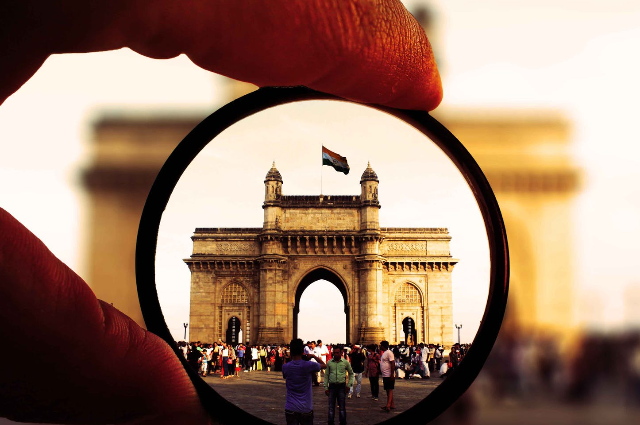
The purity pollution based division into ‘brahmins kshatriyas vaishyas and shudras’ has haunted Indian soil since years and finds its roots deeply entrenched. India has been one such strategic country that has marked its legacy into caste system in a magnetic manner that it is nearly impossible for any citizen of the largest diversity to escape this mirage because it has endless boundaries. It is that scum which pulls people inside when people try uprooting the same from their lives. Everyone gets woven in caste system, in an interesting fashion. The blight of the caste based discrimination, under which millions of Indians are regarded 'untouchables’ has somehow trapped the country in virtually unnoticed manner.
For most of us born in India caste based exclusion has been an often discussed scenario. It's more important to know the surname of someone to judge if the caste is compatible enough with ours. Whether it’s about marriages or business affairs, one likes to work and establish congruency with adjacent caste groups. The closely knit stereotypical views held about caste group, colors our judgments. This interference of caste in every sphere often makes them appear inevitably natural. Seen as givens that can’t be exchanged. The practices of discrimination are humiliating, exclusionary and exploitative. Even if caste based discrimination is felt wrong, we assume it to be justified in some sense.
Brahmins placed on the top rank of caste hierarchy consider themselves as epitome of purity, thus restrict the lower ranked castes from entering temples, it’s assumed to be happening because these marginalized groups never worked to improve their social status. Thus we tend to blame them for their own plight and eventually deepen the existence of caste system perpetuating it in society.
Indians seem to be obsessed with the caste and its inequalities which are actually not materialistic but the inequality in minds. Caste can also be seen as religious Hindu identity but its roots and caste hierarchies are found to be varying across various religions, states, local areas etc.
it is shaped by local contexts. Caste is seen as an Indian tradition, or rather a construct which is stagnant. Caste in not equal to power but status, which actually encompasses power. Caste tries to find systems of legitimacy and ways to manifest itself in a strong way in almost every social sphere. The theology of modern emphasizes the hegemonic political construct constituting our quest to become ‘modern’ ape the ways of modernized countries but somehow we are not able to detach caste influences from our lives. Caste creates that darkness which is a culture that is ought to belong in past and is still being dragged in present. We are progressive in becoming modern but not enough in a true sense to realize the dark side caste imposes on the society.
The imperative of disappearance highlights the baggage of caste felt by Indians, even if we as an individual try to uproot it too but the others can’t get off this from their mind. Caste seems not to be compatible with the democratic Indian society, and each time its visibility postulate is high, it makes us realize an alarming need of equality.
The intensity of caste based exclusionary practices differs in the contemporary India. In a way victims manifest caste by oppressed following oppressors by aping their lifestyles. Identity politics has paved their way by Dalit assertion also 3 rd movements of caste focusing on exclusionary practices.1990s has been the era that saw the rise of caste based movements.
Can be best understood as combination of two sets of principles- difference separation, wholism hierarchy. These are highlighted in rules ranging from marriage, food sharing, social interaction to occupation. It’s more of a hierarchical system than egalitarian. If made to see light in the dark side, this enforced practice of carrying the occupation of the family has created specializations in a field. Working in the same area makes one pass the skills to the next generation. M.N. Srinivas‘s concept of Sanskritisation and dominant caste–a prominent example of how caste intensively affects the people's existence.
Dating back to independence caste considerations has inevitably performed a role in the mass mobilizations of nationalist movement by Leaders from both ends of caste spectrum like Jyotibha Phule, B.R. Ambedkar. Difficulty in operating in caste blinded manner lead to reservations to provide unprivileged groups equal platform. But this system has today lead to more deserving people losing job or seats in educational institutions to the reserved candidates despite being more worthy of the same.
Caste has killed public spirit, made public opinion impossible. Virtue has become caste ridden and morality has become caste spelled. People should have a twisted mind that speaks humanity and justice rather than animosity generated by caste injustice and caste invested blindness among people.
One of the most significant and paradoxical changes in caste system in the contemporary period is that it has tended to become 'invisible' for upper caste because it has done its job so well. Opposite with low castes, caste has become too visible indeed their caste has tended to eclipse the other dimensions of their identities. The juxtaposition of these two aspects is central to study caste as vicious cycle. the amalgamation strength of caste system is indeed high in society. It is a predominant feature of social structure in India. It is an inscriptive system of status and hierarchy. It is pervasive and embracing, controls and defines all social, economic and political relationships for an individual.
It is believed that one could at least dilute the effects of caste in their lives, if not can eradicate starting from their own lives and try to minimize the caste based thoughts ruling the marriage related matters, food sharing rules , and making cohesive bonds without bothering to drag caste in between. Awareness and strong opinions can work in favor of the same.
